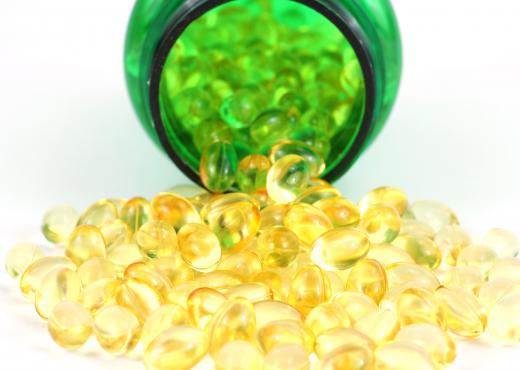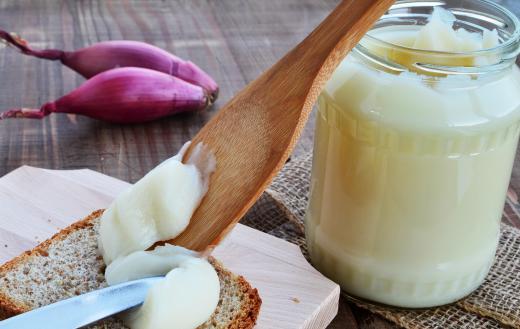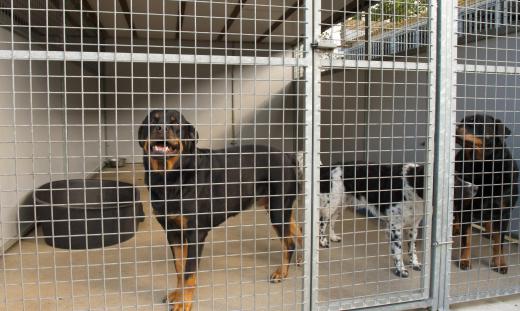A rendering plant is a processing operation where dead animals are recycled into products from human food to biodiesel. The remains and waste from slaughterhouses are the primary contributors to these facilities. Heads, hooves, bones, blood, offal (internal organs) and anything else that cannot be used ends up at a rendering plant.
Carcasses of dead animals from livestock and confinement operations are the secondary contributors. A rendering plant will also take dead horses, llamas and other farm and zoo animals. Remains of dogs and cats, roadkill (deer, skunks, rats and raccoons) end up there as well. Veterinary clinics and animal shelters also rely on rendering plants for their euthanized animals. They also accept throwback or rejected meat from supermarkets.
The majority of edible rendering products are sold to feed manufacturers as a source of protein, calcium and phosphorous. The manufacturers then take this “food enhancer,” add ingredients to eventually sell as domestic pet food and livestock feed.

Animals that are not slaughtered or euthanized often die from some form of cancer, encephalitis or organ failure. The euthanized animals have been given sodium pentobarbital. This barbiturate shows up in dog and cat food as well as livestock feed because the rendering process will not break it down.
Raw materials also end up in the rendering “soup.” Heavy metals (cattle ID tags, surgical pins) flea collars (organophosphate insecticides), fish oil laced with contraband DDT, Styrofoam™ and plastic from rejected supermarket meat packaging are common ingredients.

Final products have also identified antibiotics, hormones and pesticides. Some chemicals, such as sulfa, actually become concentrated during the rendering process. It is an unavoidable concession that toxic waste ends up in rendering plant final products.
The goal of any rendering plant is financial and it is not cost-effective to take the time to separate intestines, eyeballs, feathers, hair, bones or rancid restaurant grease. It is not a requirement to identify animals that have died of natural causes for edible rendering.
The end product will dictate the procedure used at the rendering plant. One process cooks the soup past boiling, and then removes the moisture. It is ground into a powder for bone meal or recycled meat for pets, zoo and farm animals.
Dairy animals, cattle, hogs, poultry, sheep and fish are all consuming the rendering plant products on a daily basis. Most of these animals are natural herbivores but have commercially become carnivores and most often cannibals.

The rendering plant also prepares products considered “edible rendering” for humans. This process involves the chopping of edible materials (primarily fat), cooking at low temperatures, and then separating the liquid and fat from solids through a centrifugal separation.
Due to the fear of bovine spongiform encephalogathy (mad-cow disease, BSE), spinal cords are now forbidden in rendering products for human consumption. Due to the lack of vigilance, however, proper inspections are not performed and these types of items are not separated properly.

Human edible rendering includes meat by-products, chicken fat, beef fat, lard, fish oil, fish meal, bone meal and tallow. Esters, found in ales, also come from rendering. Tallow is used in many foods, flavorings and pharmaceutical products. Non-edible tallow products are wax products, crayons and soaps.
Other end products include all forms of cosmetics, toothpaste, nasal sprays, shampoos, creams and ointments. Plastics, rubber products, solvents and toys are also products that come in close human contact. Anything that includes the ingredients glycerin, linoleic acid, oleic acid, steric acid, tallow, meat or bone meal are rendering plant source products.
Meat packing companies benefit from producing edible rendering as a side business. However, this industry is not well regulated, nor is there any consistency established. You cannot be sure how your fat product was processed, or its source.

With the high volume of meat consumption in the world today, the rendering plant industry is mandatory to resolve the problem of animal remains. Without this recycling from slaughterhouse waste, we would be threatened with uncontrolled viral and bacterial epidemics. Rendering has been a craft carried on for centuries in kitchens and shops to make candles, soap, ghee (clarified butter) and lard. It has become a worldwide, multibillion-US Dollar industry.
As long as animals are consumed, rendering plants are necessary. Most environmentally concerned citizens believe that costly programs and unmanageable regulations get the focus rather than cleaning up the industry to produce safe products.
Bringing awareness of the animal feed quality, the consequential threat they pose to the animals we eventually eat, and the pets we love should be enough to bring social demands for quality regulation in many people's opinion.
What Is a Rendering Machine?

A rendering machine for animals is one that shreds and grinds up their remains to be used for both edible and inedible purposes. Industrial shredders are used to typically have twin shafts with a cutting chamber and a direct drive. They have mechanical shaft seals, teeth, and a fully sealed housing that does the job of pulling apart the animals as needed.
Some shredders are larger and are used to remove and shred solids that are found in liquid systems. These types may be installed either vertically or horizontally. Horizontal installation requires a stand while vertical installation uses a hopper and flange adapters. Like most machinery, industrial shredders have a variety of options to choose from, such as stainless steel construction, infeed conveyors, hydraulic drive, and right-angle gear drive, which saves space in small areas.
In addition to shredders, some rendering machines are crushers and grinders. These machines are used to break up solid pieces, lumps, and agglomerates using a non-churning and crashing action to create a minimal mess. These types of machines are essential for ensuring rendering factories are within regulation. Using a high-quality, professional-grade crusher reduces downtime for plants, increases how fast it processes animal parts and helps to ensure consistency of the offered products.
A well-made and properly aligned lump-breaking machine works on hard or soft, as well as wet, dry, and sticky substances. From food and plastics to ash and chemicals, the ability to cut through them is essential. Many crushers are available as single-, dual-, or triple-shaft configurations. In-line or gravity configurations are also available for most types of machines.
What Is the Rendering Process for Edible Products?
When a rendering process is creating something edible, it is typically a meat processing operation that creates lard or edible tallow that you find in some of your food products. The edible rendering process requires a continuous movement at a temperature that is lower than the boiling point of water and requires machinery to chip the edible fat into fine pieces. Heat is then required and may or may not use a steaming process.
After the heating process, edible rendering requires at least two stages of centrifugal separation. During the first stage, solids are separated from the liquid and fat mixture. During the second stage, the fat and water are separated from each other. The leftover solids are edible in some food products for humans and many for pets, depending on the origin of the materials. The fat may also be used in some food products or used to create soaps. Meatpacking companies are usually responsible for edible rendering.
What Is the Rendering Process for Inedible Products?
When a product is not edible either due to sanitation or aesthetic reasons, it may go through the rendering process for inedible products. Typically, inedible raw materials are rendered with a method known as the "dry" method, which can be done either in batches or as a continuous process.
Regardless of which type is used, the material is ground down and then is put in a "steam jacket" vessel that heats it up and removes moisture while releasing any fat from the animal's fat cells. Once the free fat is drained, the material is pressed out to remove more fat. This type of fat is known as "dry-rendered tankage" but may also be called "cracklings." The dry-rendered tankage is ground down even further to create bone meal. Sometimes, rendering plants use a variation on the dry process. The variation requires processors to first finely chop the material and then fluidize it with hot fat. From there, the mixture is evaporated.
Another variation is known as a wet process. This continuous processing method is very similar to the methods used to process edible materials. First, it is heated with steam, then it is pressed to remove the mixture of water and fat. Like the edible processing, the fat, water, and fine solids are evaporated and separated further, and then the solids are dried and ground into bone meal. Inedible materials are usually processed by independent renderers.
What Are the Advantages and Disadvantages of Rendering Animal Products?
The biggest advantage of rendering animal products is that it is one of the oldest recycling methods and even made the large food industry possible. Without the industry, these wasted materials would create a huge disposal problem. Rendering them allows the world to create rubber, plastic, soap, and even fuel. Without rendering, these items would also spoil much faster (think of the stink!). Rendering makes them more resistant to spoilage. The rendering industry allows for low-cost grease, animal feed, and tallow, which is essential for the steel rolling industry. Without the industry, animal waste would be an environmental and economic burden.
